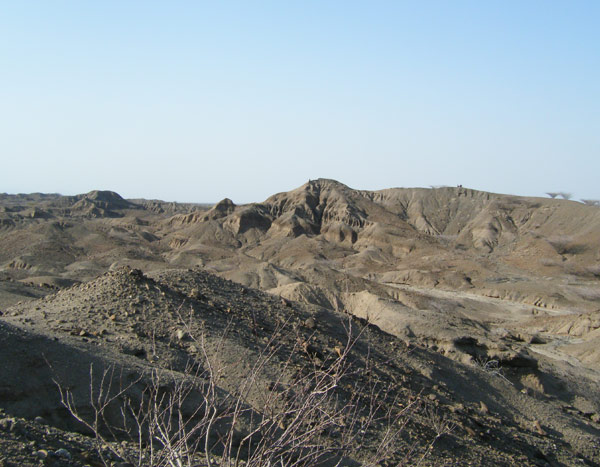Is the archaeological site of LOM3 a unique occurrence?
What are the climatic, tectonic, and paleoecological contexts?
Are the LOM3 stone tools unique?
Our goal is to:
- 1) Pursue the ongoing excavation at LOM3 and study future potential in situ new findings. Only a portion of the site has been excavated so far and we are in need to extend the dig, collect more in situ artefacts and bones, and identify the geographical extension of the site;
- 2) Survey for additional archaeological concentrations contemporaneous or older than LOM3.
Are the LOM3 stone artefacts unique in term of their technology?
We will discuss the differences in terms of complexity in the sequencing of actions during knapping (planification, control error, spatial coordination) between the Lomekwian (3.3 Ma) and the earliest Oldowan (2.6-2 Ma) industries (S. Harmand & N. Taylor).
We know that much of the variation among Lomekwian (3.3 Ma) and Oldowan assemblages (2.3 – 1.6 Ma) in the Nachukui Formation is not the result of the exploitation of different types of raw materials with different knapping properties, nor the distances to the sources of rocks. We will undertake morphotechnical analyses of the artefacts, identification of the production sequences in order to determine the strategies of lithic reduction, the petrographic and typological classification of the material, combined in the field with the identification of raw material sources (S. Harmand & N. Taylor). Each assemblages will be studied according to the same technological approach to allow their comparative study.
Paleoenvironmental, paleoecological and geochronological contexts of the Earliest Stone Knapping.
The paleoecological goals will focus on reconstructing the changing environmental and ecological contexts in which hominins began to knap stone tools in West Turkana, and examining the archaeozoological evidence for whether or not the tools were used to access animal carcass resources (J. Lewis). What are the environmental deposits, the timing of the environmental changes and the chronology of the sites at a higher temporal resolution? We propose to reconstruct the chronology of the sites at a higher temporal resolution, using the argon-argon chronology of the volcanic ashes and the cyclostratigraphy of the paleoshorelines. The long geological cross sections will be done by X. Boës, in collaboration with C. Feibel (geologist at the University of Rutgers). The geochemical analyses will be performed at the CRPG_CNRS-Nancy.
This task is based on fieldworks undertaken by the Mission Préhistorique au Kenya/ West Turkana Archaeological Project and funded by the French Ministry of Foreign Affairs. https://mpk-wtap.com/
Main collaborators
- Sonia Harmand (Stony Brook University, Turkana Basin Institute & IFRA Nairobi, UMIFRE USR 3336 CNRS)
Lithic technology, fieldwork Director
Coordinator “Task 1”
Contact: sonia.harmand@stonybrook.edu - Jason Lewis (Stony Brook University)
Archeozoology, fieldwork - Nicholas Taylor (Turkana Basin Institute, Stony Brook University)
Lithic technology, fieldwork - Sandrine Prat (CNRS, UMR 7194, HNHP)
Fieldwork - Xavier Boës (INRAP &UMR 7194, HNHP)
Geology/sedimentology, INRAP/ HNHP, UMR 7194 - Vincent Arrighi (INRAP)
Field topography


